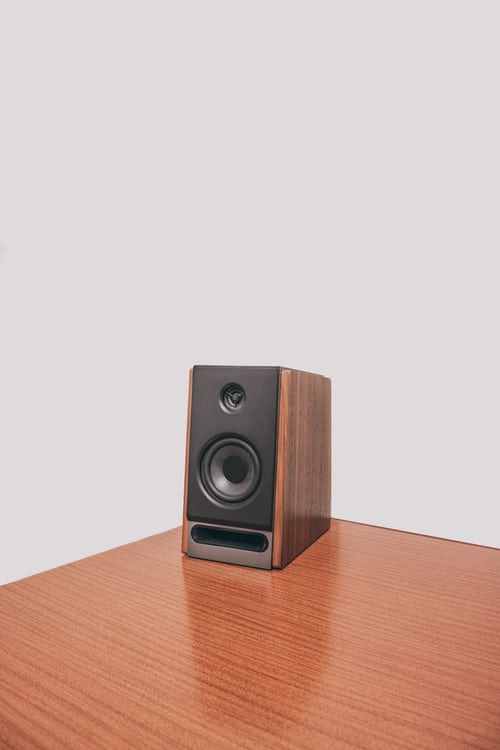How Long Do Speakers Last?
How Long Do Speakers Last? A long time!
Speakers can last for quite some time with proper maintenance. Barring harmful factors like heat, humidity, & component failure, and accounting for the design/material, as long as you properly care for your speakers, they should ultimately last you many years. A speaker’s life can be prolonged by cleaning it and not playing at extreme volume levels.
Today I wanted to cover something that’s been asked multiple times in the past that I think would be worth discussing — and that’s how long do speakers last?
Now the answer to that is interesting since it actually depends on a number of different factors like whether they’re old or new, where they’re placed, etc.
Though with time their audio quality can change, coupled with the fact there are ways to make older speakers sound better, we’ll also be talking about ways you can prolong the life of your speakers as much as possible.
That way you can enjoy your audio gear for many more years to come.
What Are Some Of The Reasons Speakers Stop Working Or Go Bad?
~Turning Them Up Too Loud For Long Periods Of Time

Of course we all want to enjoy our speakers, but sometimes we end up inadvertently overdoing things a bit to the point where it does more harm than good.
Problem is, when turned up too loud, especially for long periods of time, this can actually physically damage the speaker.
The amount of damage done of course will depend on the volume, but doing so can have short and or long term effects.
How loud is too loud though?
Honestly it’s hard to say since every speaker has different capabilities and ratings, but a good rule of thumb is to never go above reference level volume.
What’s that?
Well reference level is basically the volume at which films are usually calibrated and mixed at — and is typically denoted by 0 dB on your receiver.
This is extremely loud as is, but going above this introduces an entirely different host of issues like distortion, clipping, and even breaking the speaker entirely so it’s definitely something to avoid doing.
The issue is also exacerbated when using a speaker with a receiver that can’t adequately power it which can lead to having to turn it up to that point just to hear it.
So it’s important to also remember to use a receiver that actually has enough power to run your speakers.
That way your receiver actually lasts a while.
A good rule of thumb that should help is using a receiver that supports at least 70 watts per channel if using it in a decent sized room.
~Leaving Them In Environments Where Moisture Is Present
It’s pretty much a given that unless they’re weather resistant, moisture and electronics generally don’t mix; so leaving them in environments where a lot of this is present can corrode the internals causing them to malfunction.
This can bring about a myriad of other problems too like oxidation, a scratchy sounding tweeter or driver, or even the wood itself to rot, rendering it inoperative as a result.
~Leaving Them In Extreme Heat Or Cold
Another factor that doesn’t play well with electronics, and speakers in particular – is extreme temperatures.
Like with moisture, having a speaker in climates that are too hot or too cold can be absolutely detrimental to the longevity of the speaker.
When it’s too hot, you run the risk of melting the insides of the driver and even wiring. When it’s too cold though, you run the risk of things becoming to brittle and breaking, so just be aware of this when deciding to place your speaker.
~The Materials They’re Made Of

The materials that make up the speaker are one of the most important factors when determining how long a speaker will last for; especially when it comes to the surrounding edges.
This is the material that actually surrounds the drivers or woofers on the outside, and depending on what it’s made of, it can dramatically effect not only their sound, but their durability as well.
When this gets damaged, it can affect the performance of the voice coil (the spiraled wire connected to the cone of the driver) and it might not perform as optimally so there’s that.
Rubber is used a lot more in more modern speakers and is much more durable than foam typically.
Cloth is also typically used in the surrounding edges as well since it can’t technically rot, but it can be abraded and even perforated over time from small articulates like sand.
Even this however is dependent on the thickness and the quality of the material being used.
The cabinet or enclosure of the speaker is especially dependent on the materials used as a lower quality wood won’t last as long as one with MDF (medium density fiberboard) style wood.
Plastic on the other hand can last a little longer than wood, especially in humid environments.
But if used in an inside environment exclusively, then they’re pretty comparable when it comes to durability.
Other parts of a speaker like the dust cap and even the cone can degrade over time too.
Even the type of glue used in the adhesives matters, and if an insufficient amount or lower quality is used, this can also have an effect from what I’ve seen.
~Different Manufacturing Tolerances Or Defects
Keep in mind that the quality of the speaker itself plays a huge role in terms of if and when it might give out.
Different brands have different levels of build quality, and these variations in manufacturing can mean all the difference.
To further complicate things, given a speakers dynamic nature and how they’re made, there can be disparities even within the same line let alone the same brand.
That’s not even accounting for defects which can and do happen to varying degrees.
This of course all ties back to the materials as ones that aren’t as durable obviously won’t last as long as higher quality ones. What’s also important is whether the speaker was designed to be repairable to begin with.
For example some speakers may have the tweeter and the woofer built into a single sheet of plastic within the speaker known as the baffle.
Problem is, even if just one of those were to break, then entire board including both the tweeter and the woofer would need to be replaced, and the effort required in doing so would likely surpass the means of just getting an entirely new one.
Again, that’s if it’s repairable, as some of the internal parts including the crossover may be affixed to the cabinet itself making any repairs impossible. As you can see, there’s just a lot that matters when determining a speaker’s lifespan.
Speaking of which, how long do they last then?
How Long Do They Actually Work For?
So with all of that being said, how long do speakers typically last for?
Well with the proper maintenance they can actually last for at least a couple decades believe it or not.
Barring any of the extraneous factors we talked about earlier, as long as you properly care for your speakers, they should ultimately last you a long while.
I know people that have speakers from the 80’s that are still alive and well.
The oldest set of speakers I have right now are 10 years old, and even those still work perfectly fine.
Ask anybody who’s been into audio for any extended period of time, and they’ll likely tell you about a pair they have that still works from years ago.
Point is,they have the capability to perform almost indefinitely when properly taken care of (and as long as they’re quality)
What’s even better is because of the fact that technology has advanced so much during this time, newer materials are being used that expand their durability even further.
There’s also outside speaker variants that are created with the purpose of functioning outside, but even these should last just as long.
So you can rest assured that as long as you get quality ones, your speakers should last you for the long haul.
What Are Some Of The Ways You Can Prolong The Life Of Your Speaker?
Now that we know that speakers should work for a long time, what can you do to make sure that they actually do?
Well luckily, there’s a few things.
~Wipe Off Any Excess Dirt Or Dust
From time to time, it’s helpful to wipe down your equipment so that excess dirt & dust doesn’t accumulate.
This can not only affect the aesthetics of it, but the actual sound quality as well.
A microfiber cloth should suffice, but if it’s really bad, then a tiny drop of a gentle wood cleaner should be adequate. This is the one I use.
Method Daily Wood Surface Cleaner
~Not Turning The Gain Or Trim Levels Too High In The Receiver
This one is an important one that we sort of touched upon a little bit earlier.
Remember how I said not to go above reference level since this can damage the speaker?
Well what’s also important is not setting the volume levels above that on the receiver.
Most receivers usually let you adjust the trim levels for each individual speaker, but setting them too high can also introduce distortion which obviously isn’t pleasant.
Luckily a lot of the newer ones have automatic calibration software so that you won’t have to worry about this.
A common misconception is that the positive number on the receiver is fine but it’s actually the exact opposite.
The reason for that negative number is that it denotes how many decibels away from reference level (the volume setting of 0) you are.
So when you go into the positive numbers, that’s basically telling you how much above reference level you are – which is certainly not a good thing long term.
Try to stay below that point.
~Placing Them In a Dry and Temperate Environment
I also talked about this one earlier, but it still remains true. If you want to prolong the life of your speaker, then you’ll definitely want to make sure that they’re placed in a place that’s as dry and mild as possible.
Doing so ensures the longest shelf life for your audio equipment.
What To Do If Your Speakers Do Stop Working?
But what if your speakers do hypothetically stop stop working for whatever reason, is there anything that you can do?
Surprisingly there is, and I even did an article covering what you can do should this unexpectedly happen.
https://easyhometheater.net/why-arent-my-speakers-working
Final Thoughts
So hopefully with what all we’ve covered, this helps to give you a rough overall idea of how long your speakers should typically last you.
Of course there’s many other factors involved when determining this, but the general consensus is that if properly taken care of, they should keep working for as long as you have them.
That means with the appropriate maintenance like mentioned before, you’ll be able to enjoy all your favorite movies and games for many years with no worries.
If you want to eak out even more performance from your system by the way, then be sure to check out this article I did that gives you tips on doing just that.
https://easyhometheater.net/home-theater-ideas
But that’s all for now. Remember if you have any questions at all, then feel free to reach out.
Until next time, make it easy, keep it simple.
About Me

Jay
Hey everyone it’s nice to meet you. I'm Jay, writer & founder of the site Easy Home Theater. I've been with this hobby of home entertainment for many years now. I decided to create this site to be a helpful resource, and share everything that I've learned from personal experience with you. I also happen to be a huge gamer, lover of all things tech related, and a major fitness buff (love weightlifting)
Contact: Contact Jay
Facebook: https://www.facebook.com/Easyhometheater/
X: https://x.com/easyhometheater
Pinterest: https://www.pinterest.com/easyhometheater/pins/
Instagram: https://www.instagram.com/easyhometheater/
Followit: https://follow.it/easy-home-theater
Bluesky: https://bsky.app/profile/easyhometheater.bsky.social







Leave a Reply